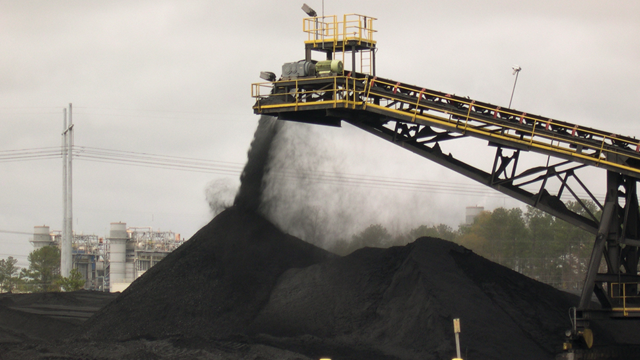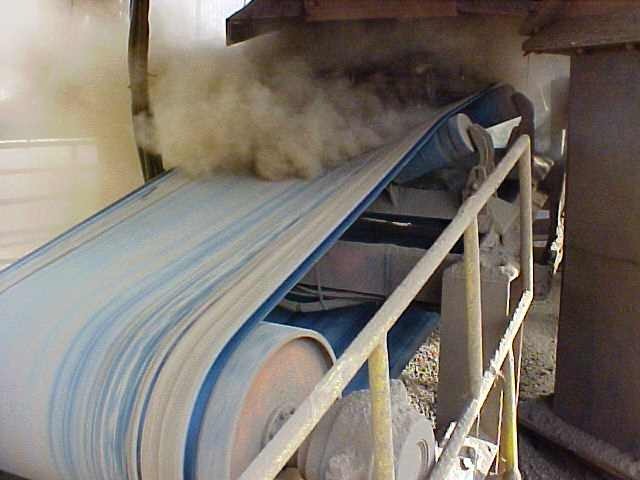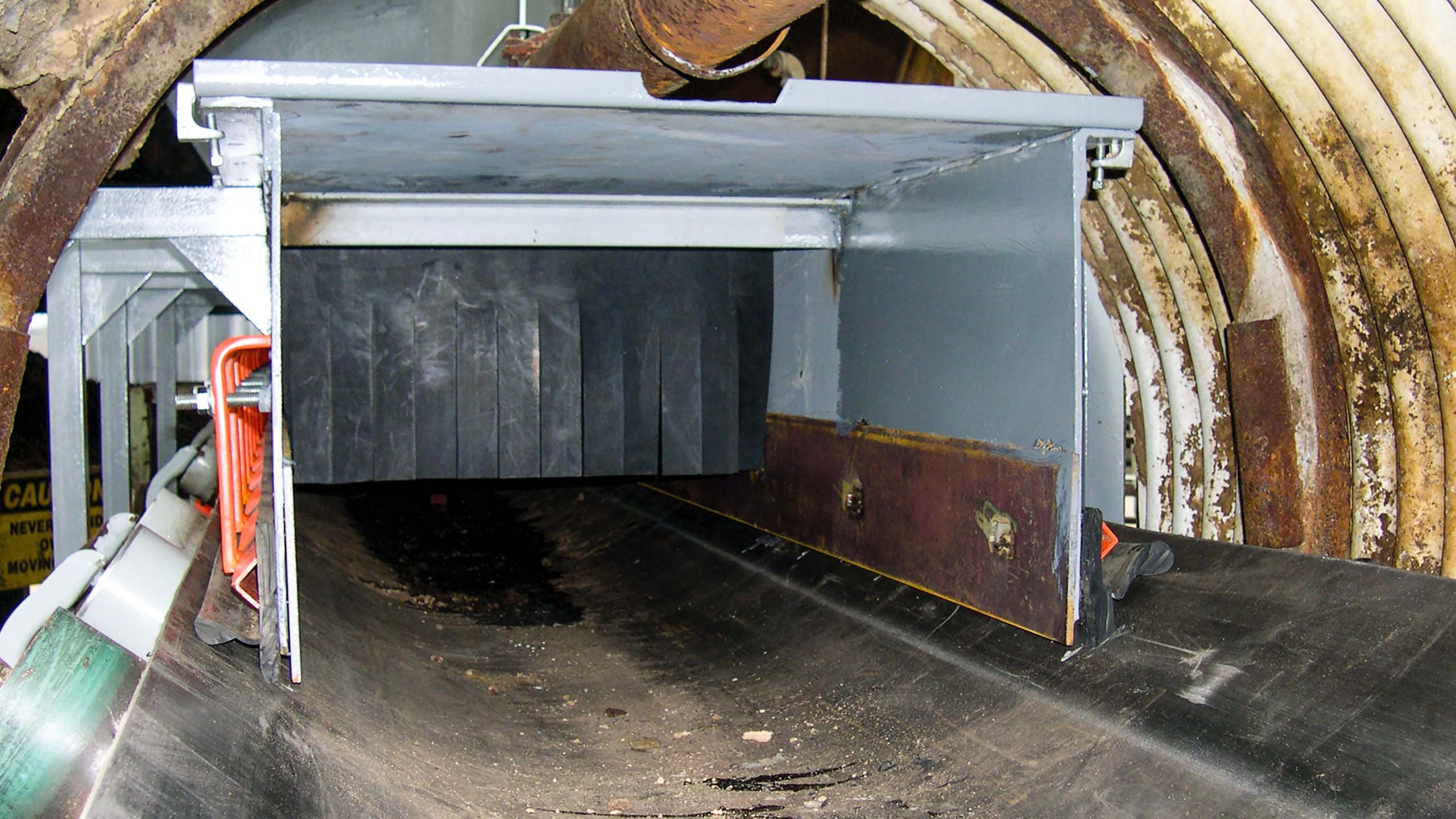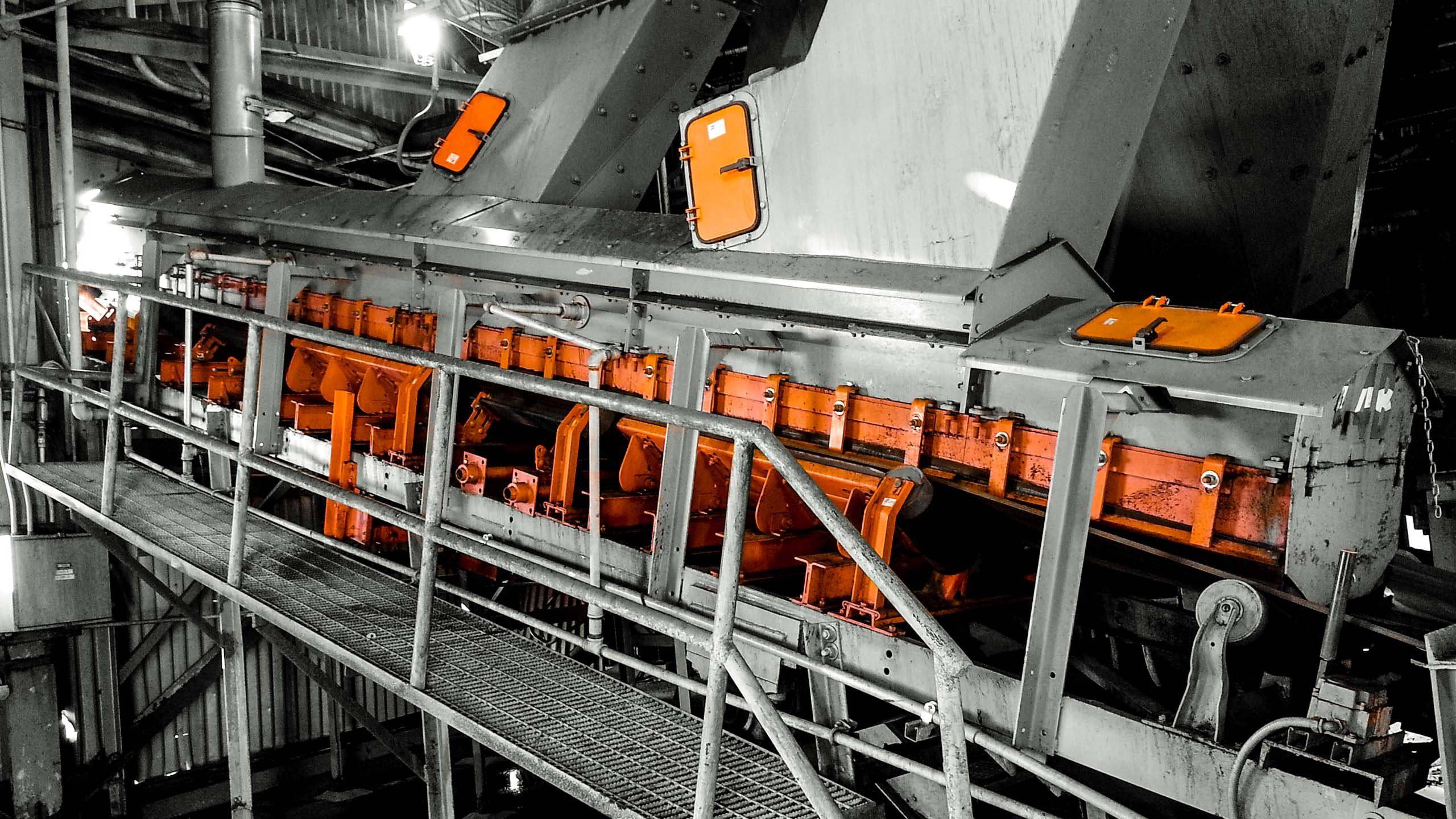A 270-megawatt (362000-hp) power plant might burn approximately 82 tons per hour (90 st/h), 24 hours per day, seven days a week. This turns into 13,776 tons per week (15120 st/wk). Even allowing a two-week maintenance outage, the annual coal consumption of this plant would be more than 688,000 tons per 50-week-year (759,000 st/50-wk-yr).
The plant receives its coal in unit trains composed of 120 cars, each with a capacity of 91 tons (100 st). With the total train capacity of 10,920 tons (12,000 st), the plant will need to receive roughly 1.25 trains per week, or 5 trains a month. That is approximately 60 trains per year. These figures will vary depending on the type (heat output) of the specific coal used.
Thermal penalty is the amount of coal that must be burned just to remove the moisture added to the coal by the dust suppression system. It is equal to between 1.0 and 1.6 kilogram per ton (1.9 to 3.3 lbm/st) for each one percent of water added to the coal.
At the rate of 0.1 of 1 percent of coal used to eliminate this one percent additional moisture, the plant will lose the heat from 10,440 to 17,500 kilograms (22,800 to 39,600 lbm) of coal per trainload, or roughly 0.1 to 0.2 of a carload. That amounts to 6 to 12 railcars per year—perhaps 1 railcar per month—burned just to drive off the added moisture.
| Thermal Penalty in a Coal-Fired Power Plant | ||
|---|---|---|
| Metric | Imperial | |
| Unit to measure heat/energy | Kilojoule (kJ) | British Thermal Unit (BTU) |
| Weight of water | 1 kg/l | 8.33 lbm/gal |
| Energy to vaporize water | 2675 kJ to vaporize 1 kg (about 0,5 l) of water from Standard Temperature and Pressure (STP) | 1150 BTU to vaporize 1 lbm (about 1 pt) of water from STP |
| Coal unit | ton (1000 kg) | short ton (2000 lb) |
| Water required to raise moisture content of unit of coal by 1% | 10 kg (10 l) | 20 lbm (2.4 gal) |
| Heat required to burn this 1% of additional water off the unit (ton/st) of coal | 26750 kJ (2675 kJ/kg x 10 kg) |
23000 BTU (1150 BTU/lbm x 20 lbm) |
| Heat content of coal Source: Coal Data: A Reference published by U.S. Department of Energy, Energy Information Administration. Metric conversion by Martin Engineering. |
Bituminous = 27900 kJ/kg Subbituminous = 20900 kJ/kg Lignite = 16300 kJ/kg |
Bituminous = 12000 BTU/lbm Subbituminous = 9000 BTU/lbm Lignite = 7000 BTU/lbm |
| Amount of coal required to provide the heat required to burn off 1% water from 1 ton (1 st) of coal | ||
| Heat Required (kJ) divided by Heat Content (kJ/kg) = kg | Heat Required (BTU) divided by Heat Content (BTU/lbm) = lbm | |
| 26750 / kJ/kg = kg | 23000 / BTU/lbm = lbm | |
| Bituminous 0,96 kg Sub-bituminous 1,3 kg Lignite 1,6 kg |
Bituminous 1.9 lbm Sub-bituminous 2.55 lbm Lignite 3.3 lbm |
|
| Summary | It takes from 0,96 kg to 1,6kg to burn off 1% of water added to a ton of coal. | It takes 1.9 lbm to 3.3 lbm of coal to burn off 1% of wateradded to a st of coal. |
| In percent | This is 0,0096 to 0,016 of the coal (1/10 to 1/6 of 1 percent) | This is 0.0095 to 0.0165 of the coal (1/10 to 1/6 of 1 percent) |
| Railcar contents | 91 tons (91000 kg) | 100 st (200000 lbm) |
| Loss from every carload | ~87 to 146 kg | ~190 to 330 lbm |
| Loss from every 120-car unit train | ~10440 to 17500 kg/trainload or between 1/10 and 1/5 of a carload/train | ~22800 to 39600 lbm/trainload or between 1/10 to 1/5 of a carload/train |
| If this 270-megawatt (362000-hp) plant receives 60 unit trains per year: | ||
| Annual loss | ~625000 to 1,1 million kg or ~625 to 1100 tons or 6 to 12 carloads/year |
~1.35 to 2.4 million lbm or ~684 to 1188 st or 6 to 12 carloads/year |
Dust Suppression: One Piece of the Puzzle
In Closing...
Dust suppression is best suited to enclosed spaces of reasonable size. It becomes difficult to apply and control any of the various forms of dust suppression in open areas or inside large structures such as railcar or haul-truck dumps. Acceptable results in these applications may require a combination of confinement, suppression, and collection.
Dust suppression cannot stand alone as the complete answer to controlling fugitive materials. Properly chosen, engineered, and maintained, a dust-suppression system can provide a critical portion of the total material-management program.





















Leave Comment